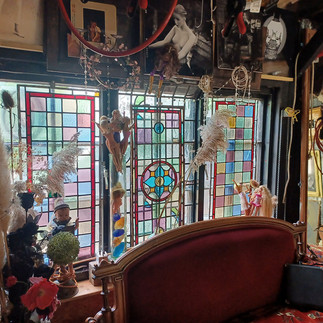Wet Plate Weekender
- The Artcasts

- Oct 28, 2021
- 2 min read
Updated: Oct 29, 2021
Back in early August I was lucky enough to attend a weekend course in wet collodion photography with one of the masters of the art, Dave Shrimpton. The collodion process is an early photographic process which requires the photographic plate to be coated, sensitized, exposed and developed within the span of about fifteen minutes while the coating on the front of the plate is still 'tacky'. After a quick introduction to the equipment, history and basics of the process over a brew we ventured into the studio for a comprehensive demonstration from Dave. Twenty or so minutes later, to my horror, we were in our aprons, safety glasses and gloves and straight into coating and loading the tin plates to shoot in the studio ourselves! No pressure! Photographic collodion is a mixture of raw cotton (which has been treated with nitric and sulfuric acids) dissolved in ether and alcohol, with a little iodide and bromide mixed in. The solution is transparent and sticks to nearly everything. You pour the collodion onto a glass or black metal plate, then the tilt the plate until its entire surface is coated with the solution, then pour the excess collodion back into the bottle (easier said than done). While the plate is still wet, it is dropped into a wooden box with a solution that contains silver nitrate. The silver nitrate binds with the iodide and bromide to make a silver halide coating, which is sensitive to light. After a short time you remove the plate from the box, wipe the silver nitrate solution off the back of the plate with a clean cloth and pop it into your camera's plate holder ready for exposure. After exposure it's back into the darkroom to develop the image which is done by pouring a developer solution over the plate (iron sulfate and acetic acid). This turns the silver-halide grains that have been struck by light into a metallic silver and your image is formed. Over the weekend we made a range of tintypes and ambrotypes (on glass) indoors and out using a variety of equipment including a selection of fabulous old wooden cameras and Victorian lenses, some the size of drainpipes. To finish the plates we learnt how to wax or varnish the surface to protect the image. All in all it was an absolutely fantastic weekend and I didn't want it to end. I cannot recommend it enough for anyone interested in photography and the magic of these old processes and equipment. For more information Dave's courses on the courses please visit : https://daveshrimpton.co.uk/wet-plate-collodion-workshops/















































Comments